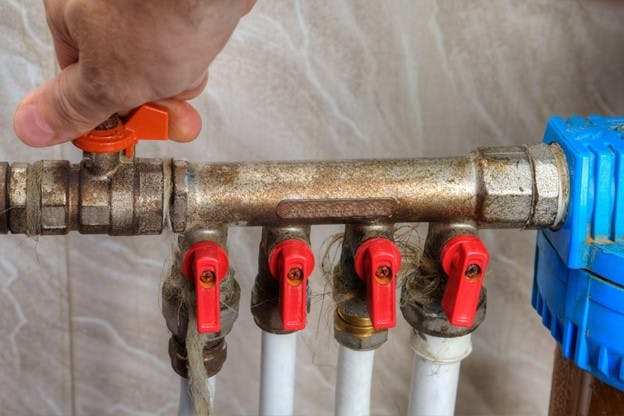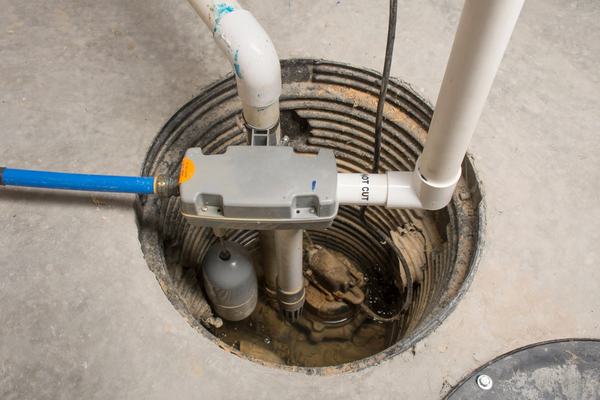Straightforward Tips for Fixing Low Water Pressure in Your Home
Straightforward Tips for Fixing Low Water Pressure in Your Home
Blog Article
The content underneath in relation to Dealing with Low Water Pressure in Your Home is seriously intriguing. Don't overlook it.

Low tide pressure in your home can be a frustrating trouble, affecting everything from bathing to cleaning meals. If you're experiencing weak water circulation, there are a number of possible reasons and solutions to explore. In this guide, we'll discuss usual reasons for low tide pressure and practical steps to attend to the issue properly.
Intro to Low Water Pressure
Low tide stress occurs when the circulation of water from your taps, showers, and other fixtures is weaker than usual. This can make daily tasks more challenging and less reliable. Understanding the sources of low water pressure is essential to discovering the appropriate service.
Common Sources Of Low Tide Pressure
Pipeline Obstructions
With time, pipelines can come to be blocked with mineral deposits, sediment, or particles, restricting the flow of water. This is an usual concern in older homes with galvanized steel pipes.
Deterioration
Deterioration within pipes can lead to leakages and reduced water pressure. Corrosion buildup can constrict water circulation, especially in maturing plumbing systems.
Faulty Stress Regulators
Pressure regulatory authorities are responsible for preserving regular water pressure in your house. If they malfunction, it can result in low tide pressure or unequal circulation throughout your house.
Community Water Issues
In some cases, the issue lies outside your home. Local water concerns, such as main line leaks or maintenance work, can momentarily reduce water stress in your area.
How to Detect Low Water Stress
Inspecting Faucets and Components
Start by checking the water stress at different faucets and components throughout your home. If the issue is separated to certain locations, it might indicate localized troubles.
Checking Pipelines
Check noticeable pipelines for signs of leaks, deterioration, or blockages. Take notice of any unusual sounds, such as banging or rattling pipes, which might suggest problems within the plumbing system.
Consulting with a Plumber
If you're incapable to determine the cause of low water stress, think about working with a specialist plumber to carry out an extensive assessment. They can identify underlying problems and advise appropriate remedies.
Do It Yourself Solutions to Take Care Of Low Tide Pressure
Cleansing Aerators and Showerheads
Natural resources can collect in aerators and showerheads, reducing water circulation. Get rid of and cleanse these components frequently to boost water stress.
Flushing Water Heater
Sediment accumulation in the hot water heater can limit flow and lower efficiency. Purging the storage tank regularly assists get rid of debris and keep optimum performance.
Inspecting Pressure Regulatory Authority
Ensure that the stress regulator is operating correctly. Readjusting or changing the regulator can assist restore correct water pressure throughout your home.
Cleaning Clogs in Pipeline
For small blockages, attempt utilizing a plumbing serpent or chemical drain cleaner to clear blockages in pipelines. Beware when utilizing chemicals and adhere to security standards.
When to Call a Professional Plumber
If DIY initiatives fail to settle the problem or if you believe significant plumbing issues, it's ideal to look for assistance from an accredited plumber. They have the expertise and devices to address complicated problems safely and effectively.
Safety Nets to Keep Water Pressure
Regular Maintenance
Arrange routine upkeep for your plumbing system to prevent concerns such as rust, leaks, and obstructions. Dealing with small problems early can aid prevent even more considerable repairs in the future.
Setting Up a Stress Booster
Take into consideration setting up a stress booster pump to boost water stress in locations with regularly reduced circulation. This can be specifically valuable for multi-story homes or residential or commercial properties with high-demand components.
Monitoring Water Usage
Be mindful of water usage practices and prevent ill-using the plumbing system. Basic changes, such as incredible showers and washing tons, can help maintain appropriate water stress.
Verdict
Managing low water stress can be discouraging, however identifying the underlying causes and carrying out suitable remedies can bring back optimum flow throughout your home. Whether it's cleansing aerators, examining pipes, or talking to a plumber, taking aggressive actions can guarantee a constant supply of water for your daily needs.
FOUR WAYS TO FIX LOW WATER PRESSURE NOW
Turning on a shower or faucet only to find the water comes out in a sad, slow drizzle is never a good feeling. How exactly are you supposed to wash a pan or take a quick shower when it takes 10 minutes just to rinse off a little soap? The good news is that when your water pressure is bad, there's always a cause: typically one that can be easily fixed. Here are some of the most common causes of low pressure and what you can do to fix the issue:
DEBRIS AND MINERAL DEPOSIT BUILDUPS
If you notice low water pressure from just one or two of the fixtures in your house, the problem likely has to do with debris buildup. Water is full of minerals and other debris, all of which can accumulate in your pipes and on your fixtures. This can cause a blockage that affects how much water flows through. To fix this, try filling a small plastic bag with white vinegar, and use a rubber band to hang it around your showerhead or faucet. Let the head of the fixture soak for a few hours, and the vinegar should loosen the deposits.
WATER LEAKS
Leaks are another common cause of low water pressure. If water is flowing out of your plumbing through a hole or crack before it can reach your fixture, the pressure coming out of the faucet or showerhead will be lower. A plumbing professional is your best bet for finding and repairing a leak in your water supply pipes.
Leaks are another common cause of low water pressure. If water is flowing out of your plumbing through a hole or crack before it can reach your fixture, the pressure coming out of the faucet or showerhead will be lower. A plumbing professional is your best bet for finding and repairing a leak in your water supply pipes.
FOUR WAYS TO FIX LOW WATER PRESSURE NOW
Turning on a shower or faucet only to find the water comes out in a sad, slow drizzle is never a good feeling. How exactly are you supposed to wash a pan or take a quick shower when it takes 10 minutes just to rinse off a little soap? The good news is that when your water pressure is bad, there's always a cause: typically one that can be easily fixed. Here are some of the most common causes of low pressure and what you can do to fix the issue:
DEBRIS AND MINERAL DEPOSIT BUILDUPS
If you notice low water pressure from just one or two of the fixtures in your house, the problem likely has to do with debris buildup. Water is full of minerals and other debris, all of which can accumulate in your pipes and on your fixtures. This can cause a blockage that affects how much water flows through. To fix this, try filling a small plastic bag with white vinegar, and use a rubber band to hang it around your showerhead or faucet. Let the head of the fixture soak for a few hours, and the vinegar should loosen the deposits.
WATER LEAKS
Leaks are another common cause of low water pressure. If water is flowing out of your plumbing through a hole or crack before it can reach your fixture, the pressure coming out of the faucet or showerhead will be lower. A plumbing professional is your best bet for finding and repairing a leak in your water supply pipes.
Leaks are another common cause of low water pressure. If water is flowing out of your plumbing through a hole or crack before it can reach your fixture, the pressure coming out of the faucet or showerhead will be lower. A plumbing professional is your best bet for finding and repairing a leak in your water supply pipes.
A VALVE ISSUE
If you have low water pressure throughout your home, check your main shut-off valve to make sure it's completely open. You may also want to see if there's a pressure-reducing valve installed. If there is, have a plumber help you adjust the settings to get the pressure you're looking for.
OTHERS USING WATER
Believe it or not, your low water pressure could be caused by your neighbors. If you notice low pressure at certain times of day, it may be because you and the people living next to you have similar schedules - when everyone is showering at the same time, the pressure will be lower in every home. Low pressure throughout the neighborhood may also be caused by an issue with your municipal water supply. If that's the case, call the supplier to see if they're working on the issue.
https://www.rotorooter.com/blog/water-leaking/low-water-pressure-fixes/

I recently found that blog post about 9 Reasons for Low Water Pressure in Your House when doing a search on the search engines. Are you aware of somebody else who is fascinated by the topic? Feel free to share it. I take joy in reading our article about 10 Reasons for Low Water Pressure in Your House.
Website Report this page